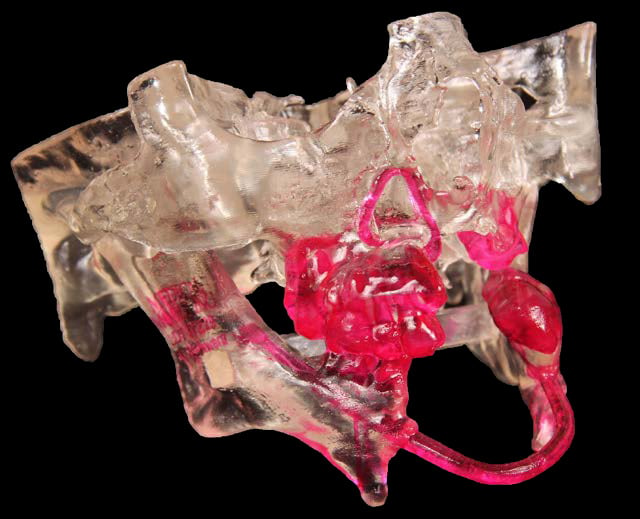
What have you eaten today, and what did you think about before taking that first bite? How it would taste and satisfy your cravings, or whether or not you would physically be able to chew it?
For years, the simple yet crucial act of eating has been a challenge for Blessing Makwera. Growing up in Zimbabwe, Blessing’s life was rattled by unforeseen tragedy at the age of 9 when a land mine blew up in his face, causing severe damage to his upper and lower jaws, tongue, lips and teeth. For many, this horrific accident would have likely imposed a grave depression. Remarkably, Blessing was able to look past his disfigurement and struggle to nourish himself and celebrate the fact that he had survived. Despite it all, he could still wake up each day and enjoy the company of his family, jump in on an impromptu game of soccer, and watch the sunset.
As luck would have it, Blessing later crossed paths with Jennifer Trubenbach while she was on a surgical mission to Zimbabwe through her organization, Operation of Hope. Jennifer was inspired by Blessing’s contagious spirit and positivity, and grew determined to restore his smile to its rightful place. Due to the extensive nature of his injuries, getting Blessing adequate help required resources beyond the scope of her mission trip, so Jennifer enlisted the help of San Diego’s Sharp Memorial Hospital to help rebuild Blessing’s face.

After reviewing Blessing’s case, oral and maxillofacial surgeon Dr. Joel Berger contacted 3D Systems to map out a plan for Blessing’s intricate and involved reconstructive facial surgery. Dr. Berger planned to conduct a fibula free flap operation, which requires reconfiguring bone, tissue and vessels from the fibula to form an upper and lower jaw receiving blood supply from the neck. For optimal execution of this highly complicated procedure, Dr. Berger enlisted the services of plastic surgeon Dr. James Chao and 3D Systems’ Virtual Surgical Planning (VSP®).
Drs. Berger and Chao worked closely with Mike Rensberger out of 3D Systems’ VSP Reconstruction services in Colorado to transform Blessing’s CT scans into 3D anatomical data for surgery visualization. Within two hours, the doctors and 3D experts were on a conference call digitally mapping out the surgical route. With a plan in place, 3D Systems printed three anatomical models and tools to aid the operating surgeons, bearing in mind that Blessing lacked normal anatomy to refer to while designing the reconstruction. For this reason, Rensberger says a set of normalized anatomy was used to help with sizing and shaping the fibula free flap segments to give Blessing a normal appearance.
The three printed models were printed in resin-based materials that had both the mechanical properties required of their purposes and that could be sterilized and cleared for use in the operating room. They included:
- A reconstructed upper and lower jaw model with a matching plate-bending template for surgeons to accurately shape a titanium reconstruction plate before the surgery (saving valuable time in the OR)
- Personalized cutting tools to guide the surgeon’s saw for work on the mandible and fibula
- Mandible and maxilla reference models so the surgeons could have hands-on familiarity with Blessing’s jaw anatomy before operating
After 12 long hours, Blessing’s surgery was a success, and Blessing Makwera had a jaw that looked and functioned like a normal one would. In a later surgery, Blessing was given jaw implants to support a dental prosthesis, finally returning his smile. This surgery likewise required the use of 3D printed models in multiple materials to help clinicians analyze bone volume, understand the proximity to nearby anatomical landmarks, and prepare for the upcoming surgery with greater clarity and ease.
Now, with his ability to laugh, smile, and eat freely fully restored, Blessing is opening the next chapter of his life as a student at the College of Western Idaho. Click here for more on his story.